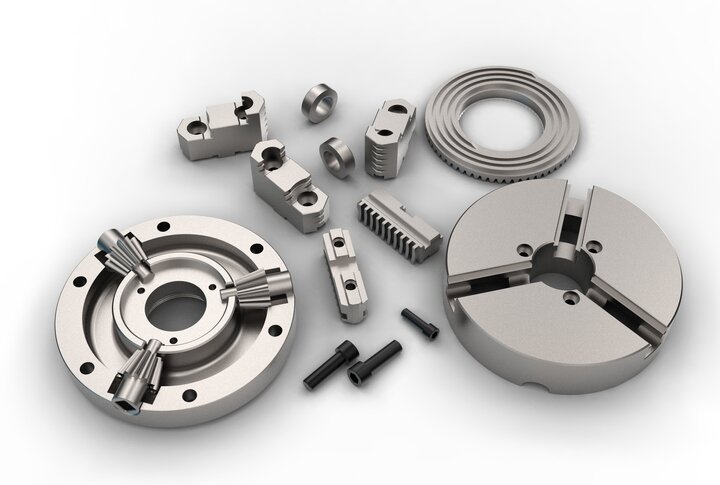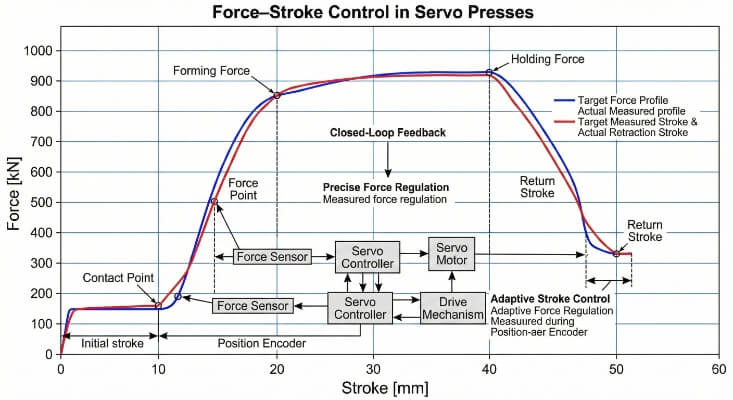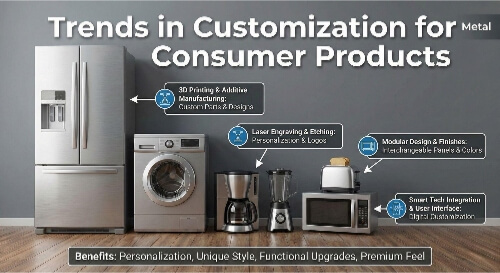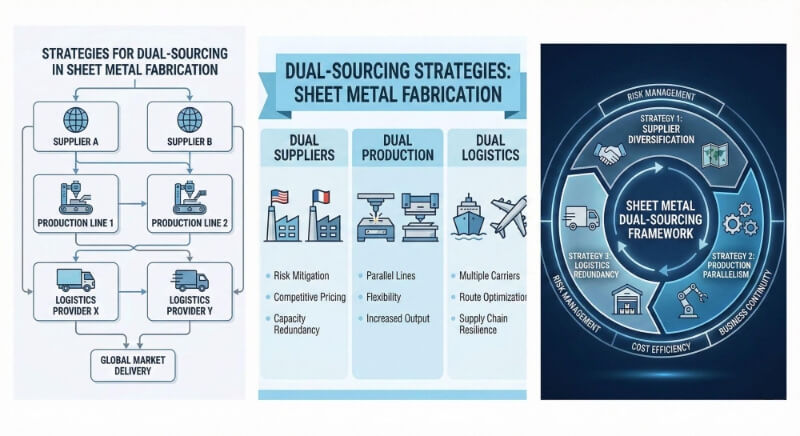Precision manufacturing requires advanced tools and equipment. Many manufacturers need help finding efficient solutions for complex machining tasks. A machining center offers a versatile and powerful answer to these challenges, revolutionizing the production process.
A machining center is a highly automated, computer-controlled machine tool that can perform multiple cutting operations on different workpiece surfaces. It combines the functions of various machines like drills, mills, and boring tools into one compact unit, streamlining the manufacturing process.
Let’s explore the key features and benefits of machining centers. We’ll break down their components, types, and applications to help you make informed decisions for your manufacturing needs.
Understanding Machining Centers
What is a Machining Center?
A machining center is a versatile and powerful machine tool. It combines multiple machining operations into one compact unit. These centers use CNC to automate complex manufacturing processes.
Types of Machining Centers
Horizontal Machining Centers
Horizontal machining centers feature a spindle that’s parallel to the ground. They excel at handling large, heavy workpieces. Their design allows for better chip evacuation, making them ideal for high-volume production.
Key features:
- Efficient for long, cylindrical parts
- Multiple pallets for quick changeovers
- Excellent for heavy-duty cutting operations
Vertical Machining Centers
Vertical machining centers have a vertically oriented spindle. They’re highly versatile and suitable for a wide range of machining tasks. These machines are popular in job shops and prototype production.
Advantages:
- More effortless workpiece loading and unloading
- Great for flat surfaces and 3D contours
- More compact footprint than horizontal centers
Universal Machining Centers
Universal machining centers combine the benefits of both horizontal and vertical configurations. They offer maximum flexibility, allowing for 5-axis machining and complex part production in a single setup.
Benefits:
- Capable of machining all sides of a part in one setup
- Ideal for complex, high-precision components
- Reduces the need for multiple machines
Each type of machining center has its strengths. Choosing the right one depends on your specific manufacturing needs and production goals.
Critical Components of a Machining Center
Let’s break down the essential parts that make a machining center tick:
Spindle Technology and Its Importance
The spindle is the heart of a machining center. It holds and rotates the cutting tool. Key features include:
- High-speed capabilities
- Precision bearings for accuracy
- Various power options for different materials
Tool Magazine and Tool Change Mechanisms
These components allow for quick tool swaps, boosting efficiency. They include:
- Carousel or chain-type tool storage
- Automatic tool changers
- Tool identification systems
Control System: The Brain of the Operation
The CNC (Computer Numerical Control) system directs all machine functions. It offers:
- Program storage and execution
- Real-time monitoring
- User-friendly interfaces
Workholding Devices: Securing Materials for Precision
These devices keep workpieces stable during machining. They include:
- Vises and clamps
- Vacuum tables
- Magnetic chucks
Operations Performed
Machining centers can perform a wide range of tasks:
Milling
Milling removes material using rotary cutters. Machining centers can perform various milling operations, including face, end, and profile milling.
Drilling
Machining centers can create holes of different sizes and depths with high precision. They often use specialized drilling cycles for increased efficiency.
Tapping
Tapping operations create internal threads in holes. Machining centers can perform rigid and floating tapping, adapting to different material requirements.
Boring
Boring operations enlarge and finish existing holes to precise dimensions. Machining centers use specialized boring tools for high accuracy and surface finish.

Advanced Features in Modern Machining Centers
Today’s machining centers are packed with cutting-edge features. Let’s explore some of these innovations:
Automation and Robotics Integration
Modern machining centers embrace automation for increased efficiency. Robotic systems handle tasks like material loading, unloading, and part inspection. This integration boosts productivity and reduces human error.
Key benefits:
- Continuous operation with minimal downtime
- Consistent quality across production runs
- Improved worker safety in hazardous environments
High-Speed Machining Capabilities
High-speed machining pushes the boundaries of performance. These advanced centers operate at higher spindle speeds and feed rates. The result is faster production times and improved surface finishes.
Advantages:
- Reduced cycle times for complex parts
- Better surface quality, reducing post-processing needs
- Improved tool life through optimized cutting conditions
Coolant Systems and Their Role in Machining
Advanced coolant systems play a crucial role in modern machining centers. They manage heat generation, chip evacuation, and lubrication. Proper coolant management extends tool life and improves part quality.
Features:
- High-pressure coolant delivery for deep-hole drilling
- Mist coolant systems for environmentally friendly operations
- Coolant filtration and recycling for cost efficiency
Software Enhancements and Digital Connectivity
Cutting-edge software and digital connectivity transform machining centers into smart manufacturing hubs. These features enable real-time monitoring, predictive maintenance, and seamless integration with other production systems.
Advancements:
- Cloud-based tool libraries and cutting data
- Digital twin technology for process optimization
- IoT connectivity for production data analysis
These advanced features elevate machining centers to new levels of performance. They enable manufacturers to meet increasingly demanding production requirements with greater ease and efficiency.
Materials and Industries
Machining centers are versatile tools that work with various materials and serve various industries. Let’s explore this diversity:
Common Materials Processed
Metals
Machining centers excel at processing a wide range of metals. They handle everything from soft aluminum to hardened steel. Precision cutting of titanium, stainless steel, and exotic alloys is also possible.
Common metal applications:
- Aluminum for lightweight components
- Steel for durable structural parts
- Brass and copper for electrical components
Plastics
Modern machining centers efficiently process various plastics. They create precise components for industries ranging from medical to consumer goods.
Popular plastic materials:
- Acrylic for transparent parts
- Nylon for wear-resistant components
- PEEK for high-performance applications
Composites
Composite materials present unique challenges that machining centers are well-equipped to handle. These materials combine the properties of multiple substances for enhanced performance.
Composite applications:
- Carbon fiber reinforced plastics for aerospace
- Glass-reinforced polymers for automotive parts
- Ceramic matrix composites for high-temperature uses
Application in Various Industries
Machining centers play crucial roles across many sectors:
Aerospace and Defense
Machining centers play a crucial role in aerospace and defense manufacturing. They produce complex, high-precision parts that meet strict industry standards.
Key applications:
- Turbine blade production
- Structural components for aircraft frames
- Precision parts for guidance systems
Automotive Manufacturing
The automotive industry relies heavily on machining centers. These versatile machines produce everything from engine components to body panels.
Common uses:
- Engine block machining
- Transmission parts production
- Brake system components
Medical Device Production
Machining centers are vital in creating precise medical devices. They ensure the high accuracy required for implants and surgical instruments.
Examples:
- Orthopedic implants
- Dental prosthetics
- Surgical tool manufacturing
Consumer Electronics
The consumer electronics industry uses machining centers to create intricate components. These parts are essential for devices we use daily.
Applications:
- Smartphone chassis production
- Laptop hinge mechanisms
- Camera body components
Machining centers prove their versatility across these diverse industries. They adapt to various materials and precision requirements, making them indispensable in modern manufacturing.

Selecting the Right Machining Center
Choosing the perfect machining center is crucial for your manufacturing success. Let’s explore critical factors to consider:
Analyzing Workpiece Requirements
Choosing the right machining center starts with understanding your workpiece needs. Consider the size, shape, and complexity of the parts you’ll produce.
Key factors:
- Maximum workpiece dimensions
- Required machining operations
- Material types to be processed
Considerations for Production Volume
Your production volume dramatically influences the type of machining center you need. High-volume production may require features different from those of low-volume or prototype work.
Volume-based considerations:
- Automated material handling capabilities
- Tool life and changeover times
- Spindle power and cutting speeds
Accuracy and Tolerance Levels
Different industries and applications demand varying levels of precision. Choose a machining center that meets or exceeds your accuracy requirements.
Accuracy factors:
- Positioning accuracy and repeatability
- Thermal stability features
- Vibration dampening systems
Budget and Cost Efficiency
While the initial cost is significant, consider the total cost of ownership. A more expensive machine might offer better long-term value through increased productivity and reduced downtime.
Cost considerations:
- Initial purchase price
- Maintenance and service costs
- Energy efficiency and operating expenses
Selecting the right machining center involves balancing these factors. Consider your current needs and future growth plans. The ideal machine will enhance your productivity and competitiveness in your specific market.
Maintenance and Safety
Proper care and safety practices are vital for the longevity of your machining center and the well-being of your operators. Let’s explore these crucial aspects:
Routine Maintenance Tips
Regular maintenance keeps machining centers running smoothly. It prevents costly breakdowns and ensures consistent part quality.
Key maintenance practices:
- Daily cleaning of chips and debris
- Regular lubrication of moving parts
- Checking and replacing worn tools
- Calibrating axes for accuracy
- Inspecting coolant levels and quality
Implement a preventive maintenance schedule:
- Daily quick checks
- Weekly thorough cleanings
- Monthly detailed inspections
- Annual professional servicing
Keep detailed maintenance logs. They help track machine performance and predict potential issues before they occur.
Safety Protocols and Operator Training
Safety is paramount when operating machining centers. Proper training and strict adherence to safety protocols protect operators and maintain productivity.
Essential safety measures:
- Use of personal protective equipment (PPE)
- Installation of machine guards and safety interlocks
- Implementation of emergency stop procedures
- Proper handling and storage of cutting tools
- Safe material loading and unloading practices
Operator training should cover:
- Machine operation fundamentals
- Safety features and their proper use
- Recognition of potential hazards
- Proper tool handling and changing procedures
- Basic troubleshooting skills
Regular safety audits and refresher training sessions help maintain a safe working environment. Always follow manufacturer guidelines and local safety regulations.
Conclusion
Machining centers are powerful tools that transform modern manufacturing. They boost productivity and precision by combining multiple operations into one unit. These machines are crucial across industries, from aerospace to consumer electronics.
Choosing the right machining center requires careful thought. Consider your workpiece needs, production volume, accuracy requirements, and budget. A machining center becomes a valuable asset for any manufacturer with good maintenance and safety practices.
Having explored the intricacies of machining center techniques, you now understand how to optimize your machining process. Should you require further assistance or wish to discuss machining center options, please do not hesitate to contact Shengen for expert guidance and services.
FAQs
What is the difference between a machining center and a CNC mill?
A machining center is more advanced than a CNC mill. It offers automatic tool changing and multiple-axis movements. Machining centers can perform a broader range of operations with higher levels of automation and productivity.
How do automation features enhance machining center performance?
Automation features boost performance by reducing setup times and minimizing errors. They enable lights-out manufacturing and improve consistency across production runs. This leads to increased overall equipment effectiveness.
What are the critical factors in maintaining a machining center?
Regular cleaning and lubrication are crucial. Timely replacement of worn parts and proper calibration are also necessary. Monitoring coolant systems and following manufacturer guidelines help maintain performance. Keeping accurate maintenance logs aids in predictive maintenance.
Can machining centers be used for small-scale production?
Yes, machining centers work well for small-scale production. They offer quick setup changes and high precision for prototypes. These machines are flexible enough to handle various materials and operations, making them cost-effective for custom manufacturing.
What are the upcoming technological advancements in machining centers?
Future machining centers may include AI-driven maintenance systems and enhanced IoT connectivity. Advanced simulation technologies are also on the horizon. Some machines combine additive and subtractive processes. Improved energy efficiency features are likely to become more common.
Hey, I'm Kevin Lee

For the past 10 years, I’ve been immersed in various forms of sheet metal fabrication, sharing cool insights here from my experiences across diverse workshops.
Get in touch

Kevin Lee
I have over ten years of professional experience in sheet metal fabrication, specializing in laser cutting, bending, welding, and surface treatment techniques. As the Technical Director at Shengen, I am committed to solving complex manufacturing challenges and driving innovation and quality in each project.




